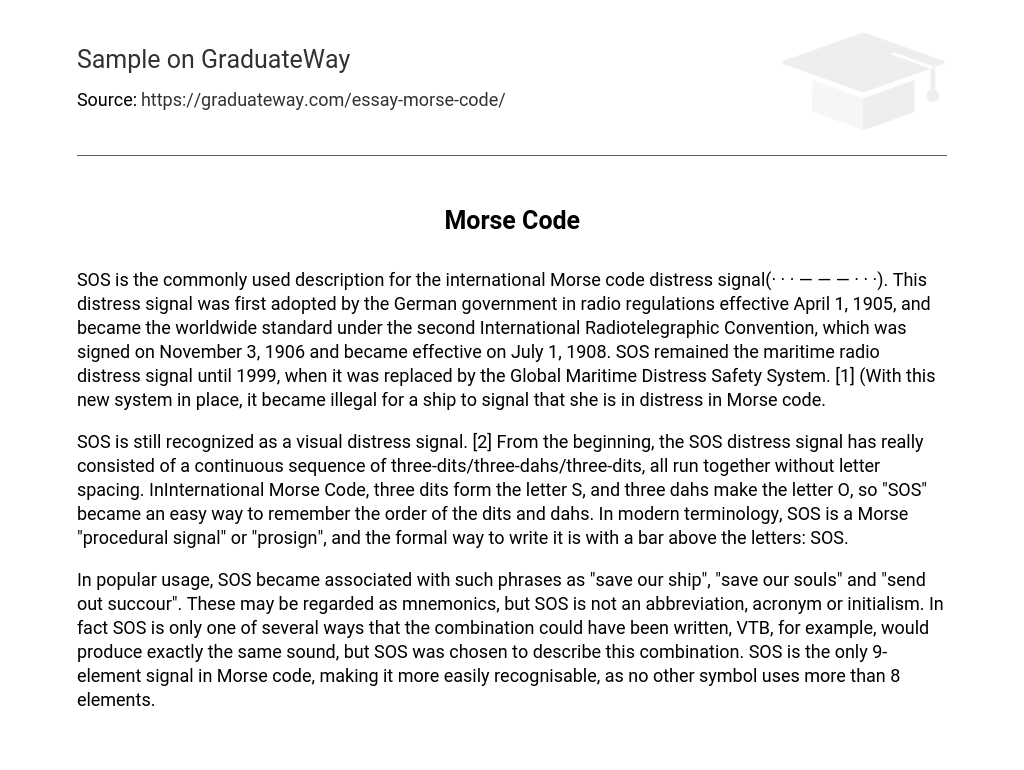SOS is the commonly used description for the international Morse code distress signal(· · · — — — · · ·). This distress signal was first adopted by the German government in radio regulations effective April 1, 1905, and became the worldwide standard under the second International Radiotelegraphic Convention, which was signed on November 3, 1906 and became effective on July 1, 1908. SOS remained the maritime radio distress signal until 1999, when it was replaced by the Global Maritime Distress Safety System. [1] (With this new system in place, it became illegal for a ship to signal that she is in distress in Morse code.
SOS is still recognized as a visual distress signal. [2] From the beginning, the SOS distress signal has really consisted of a continuous sequence of three-dits/three-dahs/three-dits, all run together without letter spacing. InInternational Morse Code, three dits form the letter S, and three dahs make the letter O, so “SOS” became an easy way to remember the order of the dits and dahs. In modern terminology, SOS is a Morse “procedural signal” or “prosign”, and the formal way to write it is with a bar above the letters: SOS.
In popular usage, SOS became associated with such phrases as “save our ship”, “save our souls” and “send out succour”. These may be regarded as mnemonics, but SOS is not an abbreviation, acronym or initialism. In fact SOS is only one of several ways that the combination could have been written, VTB, for example, would produce exactly the same sound, but SOS was chosen to describe this combination. SOS is the only 9-element signal in Morse code, making it more easily recognisable, as no other symbol uses more than 8 elements.





